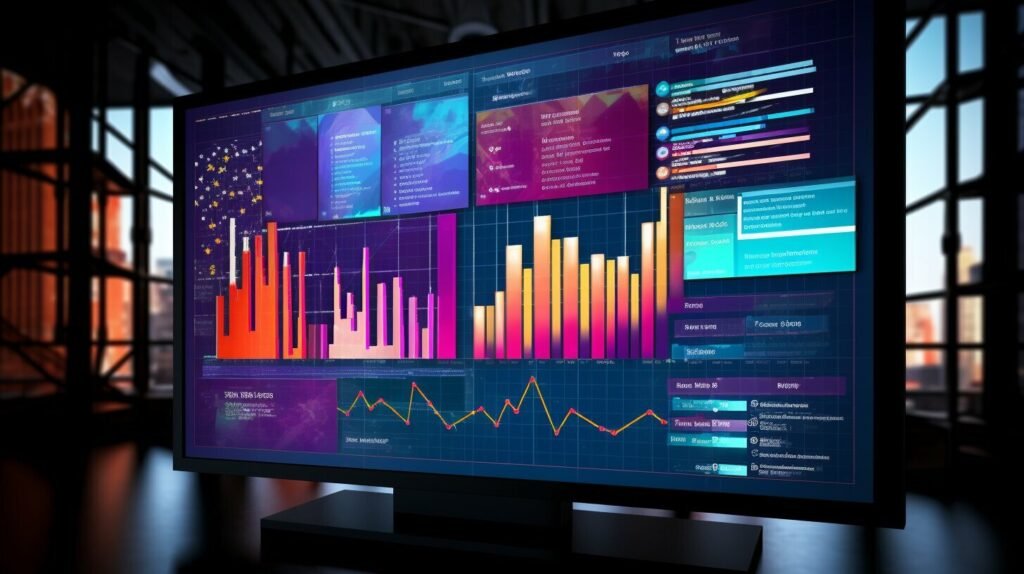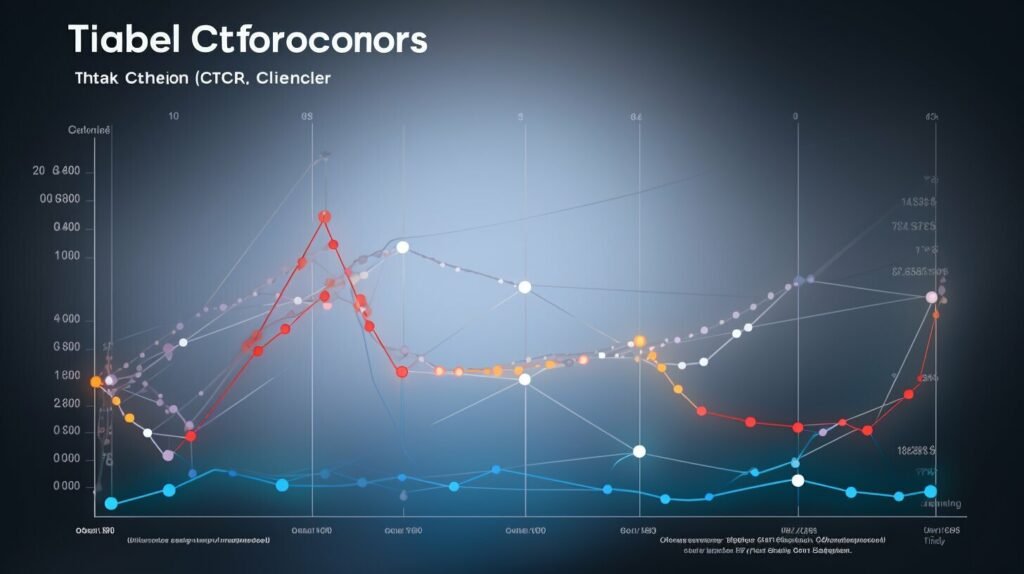As the world of marketing continues to evolve, data analytics has emerged as a critical tool for marketers seeking to maximize the impact of their campaigns. In below-the-line (BTL) marketing, data-driven strategies can be particularly effective in enhancing customer engagement and driving measurable business outcomes.
Data analytics allows marketers to gather valuable insights into consumer behavior, campaign effectiveness, and other marketing metrics. By leveraging these insights, marketers can optimize their BTL marketing strategies, improve targeting and segmentation, and ultimately drive higher return on investment (ROI).
In this article, we will explore the key concepts, benefits, and challenges of data analytics in BTL marketing. We will provide practical tips for implementing data analytics strategies in your marketing campaigns and highlight real-life case studies of successful implementation.
Key Takeaways:
- Data analytics is a critical tool for enhancing BTL marketing campaigns
- Data-driven decision-making can optimize BTL marketing strategies and improve targeting and segmentation
- Key metrics and KPIs such as conversion rates, customer acquisition costs, engagement rates, and ROI are essential for analyzing BTL marketing data
- Data insights can be leveraged to drive personalized messaging and experiences for increased customer engagement and conversion rates
- Emerging technologies such as AI and machine learning have the potential to revolutionize data-driven marketing strategies
Understanding Data Analytics in BTL Marketing
Data analytics involves the use of data to gain insights and make informed decisions. In BTL marketing, data analytics is about analyzing and interpreting data to optimize marketing campaigns and improve business outcomes. Marketing data insights can provide valuable information about consumer behavior, campaign effectiveness, and other key marketing metrics.
Marketing analytics tools play a critical role in data analysis in marketing. These tools enable marketers to collect, store, and analyze data to improve decision-making. By leveraging insights from data analysis in marketing, BTL marketers can optimize their campaigns and improve ROI.
Marketing data insights can be obtained from a variety of sources. These sources include customer data, sales data, social media data, and website traffic data. By collecting and analyzing data from these sources, marketers can gain a deeper understanding of what drives customer behavior and optimize their marketing strategies accordingly.

Data analytics in BTL marketing is not just about collecting data, but also about making data-driven decisions. By adopting a data-driven approach to marketing, marketers can optimize their campaigns, improve targeting and segmentation, and enhance customer engagement. The result is a more effective and efficient BTL marketing strategy that drives higher ROI.
Next, we’ll discuss the benefits of data analytics in BTL marketing and how it can help improve your marketing campaigns.
Benefits of Data Analytics in BTL Marketing
Data analytics can be a game-changer in BTL marketing strategies, driven by data-driven decision-making, and can offer several benefits in improving and optimizing campaigns. Here are some key benefits:
| Benefits | Description |
|---|---|
| Optimizing BTL Marketing Strategy | Using data analytics, marketers can optimize their BTL marketing strategies by identifying key metrics such as engagement rates, conversion rates, customer acquisition costs, etc., and then implementing campaigns that focus on these metrics. With the insights from data analytics, marketers can identify the most effective channels, messaging, and tactics for their campaign, making sure that they’re reaching the right target audience at the right time with the right content. |
| Improving Targeting and Segmentation | By analyzing data, marketers can understand the behaviors, preferences, and needs of their audience, and use that information to develop more targeted and personalized campaigns. With the right segmentation, marketers can tailor their messaging and content to specific groups in their audience, making it more relevant and engaging. This leads to increased customer satisfaction, improved engagement rates, and overall campaigns that are more effective in converting potential customers into actual buyers. |
| Enhancing Customer Engagement | With a better understanding of their audience, marketers can create campaigns that are more engaging, interactive, and relevant. Data-driven marketing campaigns can help marketers identify when and how to best reach out to customers, offering them content and messaging that resonates with them. This leads to increased customer engagement, higher brand loyalty, and better overall customer experience. |
| Driving Higher ROI | With more targeted campaigns, higher engagement rates, and better customer experience, data-driven marketing can ultimately lead to higher ROI for the business. By using data analytics to optimize campaigns and make data-driven decisions, marketers can leverage their budget more effectively, reaching the right audience with the right message at the right time, resulting in higher conversions and ultimately more revenue and profits. |
Overall, data analytics in BTL marketing can help marketers be more strategic in their decision-making, optimize their campaigns, and ultimately drive better results for their business. By leveraging the insights from data analytics effectively, marketers can create campaigns that are more relevant, engaging, and effective, which can result in higher ROI and a stronger competitive advantage.

Incorporating Data Analytics into BTL Marketing Campaigns
Implementing data analytics in below-the-line (BTL) marketing campaigns involves using marketing analytics tools to collect, analyze, and interpret data. To effectively incorporate data analytics into your BTL marketing campaigns, it is important to:
- Identify and define your marketing goals: Determine what you want to achieve through your BTL marketing campaigns and which metrics are most important for measuring success.
- Collect relevant data from multiple sources: Use various data sources, including customer behavior data, purchase history, demographic data, and social media data, to gain a comprehensive understanding of your target audience.
- Analyze and interpret the data: Use marketing analytics tools to analyze the data and gain insights into consumer behavior, campaign effectiveness, and other marketing metrics. Look for patterns and trends to guide your marketing decisions.
- Integrate insights into your campaign strategy: Based on the data insights gained, adjust and optimize your BTL marketing campaigns accordingly. Use the insights to inform segmenting and targeting, messaging and creative, and overall campaign strategy.
By incorporating data analytics into your BTL marketing campaigns, you can gain valuable insights into consumer behavior and campaign effectiveness. This can lead to improved targeting and segmentation, enhanced customer engagement, and ultimately higher return on investment (ROI). Utilizing advanced analytics allows marketers to track real-time performance metrics, enabling swift adjustments to strategies as needed. By analyzing notable BTL campaign insights, brands can fine-tune their messaging and delivery channels to resonate more effectively with their audience. This data-driven approach not only boosts campaign performance but also fosters a deeper connection with consumers, cultivating long-term loyalty.
Marketing analytics tools such as Adobe Analytics, Google Analytics, and IBM Coremetrics can help you collect, analyze, and interpret data effectively. These tools provide insights into key metrics such as conversion rates, customer acquisition costs, engagement rates, and ROI, which are crucial for evaluating the success of your BTL campaigns.

“Data-driven decision-making can help optimize BTL marketing strategies, improve targeting and segmentation, enhance customer engagement, and ultimately drive higher return on investment (ROI).”
Key Metrics and KPIs for Analyzing BTL Marketing Data
Measuring and tracking key metrics and key performance indicators (KPIs) is essential for evaluating the success of below-the-line (BTL) marketing campaigns. By analyzing data, marketers can gain valuable insights into consumer behavior and campaign effectiveness. Here are some important metrics and KPIs to consider:
| Metric/KPI | Description |
|---|---|
| Conversion rate | The percentage of customers who take a desired action, such as making a purchase or filling out a form. |
| Customer acquisition cost (CAC) | The total cost of acquiring a new customer, including marketing and sales expenses. |
| Engagement rate | The percentage of customers who interact with a piece of marketing content, such as liking or sharing a social media post. |
| Return on investment (ROI) | The ratio of the revenue generated by a campaign compared to the total cost of the campaign. |
| Customer lifetime value (CLV) | The total amount of revenue a customer generates for a business over the duration of their relationship. |
When analyzing BTL marketing data, it’s essential to consider both short-term and long-term metrics. Short-term metrics, such as conversion rates and engagement rates, are important for evaluating the immediate impact of a campaign. Long-term metrics, such as CLV, are important for assessing the lifetime value of customers and the overall impact of marketing efforts on revenue.
Marketers should also consider the context of their campaigns when analyzing data. For example, metrics and KPIs may vary based on the type of campaign, the target audience, and the overall business objectives. By carefully selecting and tracking key metrics and KPIs, marketers can gain deeper insights into their BTL marketing efforts and make data-driven decisions to optimize their campaigns.

Leveraging Data Insights for Targeted BTL Marketing
One of the most significant benefits of utilizing data analytics in BTL marketing is the ability to leverage data insights for targeted marketing efforts. By analyzing customer data, businesses can segment customers based on various criteria and tailor marketing messages, offers, and experiences to specific customer groups. This results in higher engagement rates, increased conversion rates, and ultimately, better ROI.
The first step in leveraging data insights for targeted BTL marketing is to identify customer segments based on data analysis. This can be done by analyzing various customer attributes, such as demographics, purchase behavior, interests, and engagement history. Once the segments are identified and defined, businesses can develop personalized marketing strategies for each segment, focusing on the messaging, offers, and experiences that resonate most with them.
Personalizing the customer experience has become increasingly important in recent years. According to a 2018 survey by Evergage, 86% of marketers reported that personalization improves customer relationships, while 87% said that it positively impacts customer acquisition and retention. By leveraging data insights for targeted BTL marketing, businesses can create a more personalized experience for their customers.
An example of leveraging data insights for targeted BTL marketing is demonstrated by Amazon. The retail giant analyzes customer data to provide personalized product recommendations and targeted marketing messages. By analyzing customer purchase history, search history, and other data points, Amazon can make tailored product suggestions to each individual customer, increasing the likelihood of a purchase.

Another example is Netflix. The streaming service uses data analytics to personalize movie and TV show recommendations for each user, based on their viewing history, ratings, and other data points. This has resulted in higher engagement rates and customer satisfaction, with 75% of Netflix’s viewer activity being driven by personalized recommendations, according to a Gartner report.
Conclusion
Leveraging data insights for targeted BTL marketing is a powerful strategy for driving engagement, conversion, and ROI. By analyzing customer data and segmenting customers based on various criteria, businesses can develop personalized marketing strategies that resonate with their audiences. Examples from Amazon and Netflix demonstrate the success of this approach, and businesses that embrace data-driven marketing strategies are likely to see significant benefits.
Optimizing BTL Campaigns with A/B Testing
Beyond simply analyzing data, marketers must use insights to optimize their BTL campaigns. One effective way to do this is through A/B testing, also known as split testing.
A/B testing involves running two versions of a marketing campaign and comparing their performance to determine which approach resonates best with the target audience. This data-driven approach enables marketers to make informed decisions and improve the effectiveness of their BTL campaigns.
When conducting A/B testing, it is essential to focus on one variable at a time. This allows marketers to isolate the impact of specific changes and accurately measure the effect on campaign performance. For example, a marketer might test two different subject lines for an email campaign to determine which one leads to higher open rates.
Another key consideration in A/B testing is sample size. To ensure statistical significance, a large enough sample size must be used to accurately represent the target audience. This can help reduce the risk of bias and ensure that the results are reliable.
By using A/B testing, marketers can optimize their BTL campaigns and gain valuable insights into what resonates with their audience. The continuous testing and refinement of marketing strategies based on data insights can help drive better performance and ultimately lead to higher ROI.

“A/B testing can help marketers make data-driven decisions, improve campaign effectiveness, and identify the most impactful marketing strategies.”
Overcoming Challenges in Implementing Data Analytics
Despite the numerous benefits of using data analytics in BTL marketing campaigns, there are several challenges that marketers may encounter during implementation. These challenges can range from data quality issues to resource constraints and the need for skilled analytics professionals.
One of the most common challenges is maintaining data quality. Inaccurate or incomplete data can significantly impact the reliability and validity of data analytics results. To overcome this challenge, marketers must establish data governance policies and procedures to ensure that data is accurate, complete, and consistent.
Another challenge is maintaining data privacy. With the increasing emphasis on data privacy, marketers must take extra precautions to protect the personal data of customers. To address this challenge, marketers must ensure compliance with data protection regulations, such as GDPR and CCPA, and implement robust data security measures.
Resource constraints, such as limited budgets or lack of access to cutting-edge technologies, can also hinder the successful implementation of data analytics in BTL marketing. To overcome this challenge, marketers can leverage affordable marketing analytics tools and solutions and prioritize investments in high-impact areas.
Finally, the need for skilled analytics professionals is a crucial challenge that can be addressed through training and development programs. Marketers can upskill their teams by offering data analytics training and hiring experienced professionals to provide guidance and support.

Overcoming these challenges requires a strategic approach and a willingness to invest in data analytics infrastructure and talent. By doing so, marketers can effectively leverage data analytics to enhance their BTL marketing campaigns and drive business growth.
The Future of Data Analytics in BTL Marketing
As technology continues to evolve rapidly, so does the field of marketing analytics. With advances in artificial intelligence (AI), machine learning, and big data processing, the future of data analytics in BTL marketing is full of exciting possibilities.
One major trend we can expect to see in the coming years is an increased emphasis on real-time data analytics. With the ability to collect and analyze data in real-time, marketers can make more informed decisions and respond quickly to changing market conditions.
Another trend that is already beginning to gain traction is the use of predictive analytics to anticipate future trends and consumer behavior. By analyzing past data patterns, predictive analytics can provide valuable insights into future outcomes, allowing marketers to make more accurate predictions and better allocate their resources.
AI and machine learning are also expected to play a significant role in the future of data analytics in BTL marketing. These technologies can help automate data analysis, identify patterns and correlations that may not be immediately apparent, and provide personalized recommendations for individual customers.
Overall, the future of data analytics in BTL marketing is bright, with endless possibilities for optimizing marketing campaigns, improving customer engagement, and driving measurable business outcomes. To stay ahead of the curve, it will be essential for marketers to continue to embrace new technologies and strategies, stay up-to-date on the latest trends, and always remain data-driven in their decision-making.

Implementing Data Analytics in Your BTL Marketing Strategy
Integrating data analytics into your BTL marketing strategy can help you make informed decisions based on data insights. Here are some practical tips to help you get started:
- Define your goals: Identify specific business goals and KPIs that you want to achieve with your BTL campaigns. This will guide your data collection and analysis efforts.
- Collect data: Use marketing analytics tools such as Google Analytics or Adobe Analytics to collect data on customer behavior, campaign performance, and other metrics. Make sure to gather data from multiple sources to get a holistic view of your marketing performance.
- Analyze data: Use data analysis techniques to gain valuable insights into consumer behavior, campaign effectiveness, and other marketing metrics. This can involve using statistical models, machine learning algorithms, and other data analytics tools.
- Segment your audience: Use data insights to segment your audience based on demographics, behavior, and interests. This will help you customize your messaging and offers to specific audience segments.
- Test and optimize: Use A/B testing to test different messaging, offers, and strategies to see what works best for your audience. Continuously monitor and optimize your BTL campaigns based on data insights to improve effectiveness and ROI.
By following these tips and integrating data analytics into your BTL marketing strategy, you can improve targeting and segmentation, enhance customer engagement, and ultimately drive higher ROI.
Remember, data analytics is an ongoing process that requires continuous monitoring, analysis, and optimization. By aligning your data analytics efforts with your overall business goals and objectives, you can stay ahead of the competition and drive measurable business outcomes.

Case Studies: Success Stories of Data Analytics in BTL Marketing
Real-world case studies demonstrate the power of data analytics in BTL marketing. In one example, a shoe company increased its customer retention by over 25% by using data analytics to personalize its email marketing campaigns. The company analyzed customer purchase history and behavior data to segment its customers and deliver personalized product recommendations and offers. This resulted in a significant increase in customer engagement and sales.
In another case, a financial services company used data analytics to optimize its direct mail campaign targeting small business owners. The company analyzed data on business size, location, and industry to identify the most responsive target audience. It then used A/B testing to evaluate different messaging and design options and ultimately achieved a 20% increase in response rate.

Finally, a healthcare provider used data analytics to drive patient engagement and improve health outcomes. The company analyzed patient data to identify specific health risks and needs and used this data to create targeted outreach campaigns. By delivering personalized messaging and resources to patients, the company was able to improve patient engagement and reduce hospital readmissions.
These case studies demonstrate the value of data analytics in BTL marketing and the potential for significant business outcomes. By leveraging data insights to optimize targeting, messaging, and overall campaign performance, marketers can drive higher engagement and ROI.
Conclusion
Implementing data analytics in your below-the-line (BTL) marketing campaigns can have a significant impact on their success. By taking a data-driven approach, you can gain valuable insights into consumer behavior, optimize your targeting and segmentation, and ultimately drive higher return on investment (ROI). Analyzing data allows marketers to identify trends and preferences that can inform future campaigns, making it easier to create personalized experiences. Successful BTL campaigns in detail showcase how tailored messaging can resonate with specific audience segments, fostering deeper connections and encouraging brand loyalty. As a result, businesses can refine their strategies and allocate resources more effectively, ensuring sustainable growth.
It’s important to use marketing analytics tools to collect, analyze, and interpret data, and to measure and track metrics such as conversion rates, customer acquisition costs, and engagement rates. Leveraging data insights can also help you drive targeted BTL marketing efforts and increase customer engagement.
While there may be challenges in implementing data analytics, such as data quality and privacy concerns, resource constraints, and the need for skilled analytics professionals, there are strategies and solutions you can use to overcome them.
Looking to the future, emerging technologies such as artificial intelligence and machine learning have the potential to revolutionize data-driven marketing strategies. To stay ahead of the game, it’s important to stay updated with the latest trends and continuously optimize your BTL campaigns based on data insights.
Takeaways
- Use data analytics to gain valuable insights into consumer behavior and optimize BTL marketing campaigns
- Measure and track metrics such as conversion rates, customer acquisition costs, and engagement rates
- Leverage data insights to drive targeted BTL marketing efforts and increase customer engagement
- Overcome challenges in implementing data analytics with strategies and solutions
- Stay updated with the latest trends and continuously optimize your BTL campaigns using data insights
By implementing data analytics in your BTL marketing strategy, you can make data-driven decisions that lead to improved campaign performance, increased customer engagement, and measurable business outcomes.
How Can Data Analytics Enhance the Benefits of Technology Integration in BTL Campaigns?
Data analytics plays a crucial role in leveraging technology integration in btl campaigns. By analyzing the data gathered from various sources, marketers can gain valuable insights into consumer behavior, preferences, and trends. This enables them to effectively target their audience, optimize campaign strategies, and deliver personalized experiences. Harnessing the power of data analytics enhances the benefits of technology integration, allowing marketers to make data-driven decisions and achieve higher campaign success rates.
How Can Data Analytics Enhance Personalization and Customization in BTL Marketing Campaigns?
Data analytics are key strategies for personalization in BTL marketing campaigns. By analyzing consumer data, companies can create highly tailored and individualized marketing efforts. This allows for more effective targeting and messaging, ultimately leading to higher engagement and conversion rates. Customization based on data insights is crucial for successful BTL campaigns.
FAQ
Q: What is data analytics in BTL marketing?
A: Data analytics in BTL marketing involves analyzing and interpreting data to gain insights that can be used to enhance marketing campaigns.
Q: Why is data analytics important in BTL marketing?
A: Data analytics is important in BTL marketing because it helps optimize marketing strategies, improve targeting and segmentation, enhance customer engagement, and drive higher ROI.
Q: How can data analytics be incorporated into BTL marketing campaigns?
A: Data analytics can be incorporated into BTL marketing campaigns by using marketing analytics tools to collect, analyze, and interpret data, and implementing data analytics strategies effectively.
Q: What are the key metrics and KPIs for analyzing BTL marketing data?
A: Key metrics and KPIs for analyzing BTL marketing data include conversion rates, customer acquisition costs, engagement rates, and ROI.
Q: How can data insights be leveraged for targeted BTL marketing?
A: Data insights can be leveraged for targeted BTL marketing by segmenting customers based on data analysis and personalizing messaging, offers, and experiences.
Q: How can A/B testing optimize BTL campaigns through data analytics?
A: A/B testing can optimize BTL campaigns through data analytics by helping marketers make data-driven decisions, improve campaign effectiveness, and identify impactful marketing strategies.
Q: What are the challenges in implementing data analytics in BTL marketing?
A: Challenges in implementing data analytics in BTL marketing include data quality issues, data privacy concerns, resource constraints, and the need for skilled analytics professionals.
Q: What is the future of data analytics in BTL marketing?
A: The future of data analytics in BTL marketing includes emerging technologies like artificial intelligence and machine learning, which have the potential to revolutionize data-driven marketing strategies.
Q: How can data analytics be implemented in BTL marketing strategies?
A: Data analytics can be implemented in BTL marketing strategies by following steps for data collection, analysis, interpretation, and integrating insights into marketing campaigns.
Q: Can you provide examples of successful data analytics implementation in BTL marketing?
A: Real-life case studies showcase successful implementation of data analytics in BTL marketing, resulting in improved campaign performance, increased customer engagement, and measurable business outcomes.





